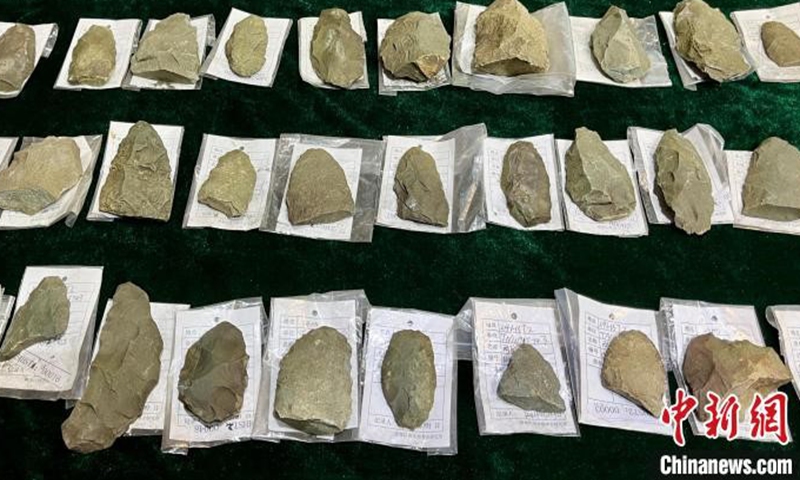ARTS / ART
New discovery of Neolithic stone artifacts reveal key prehistoric human activities in NE.China

The stone artifacts unearthed from the Shiren Cave relic site in the city of Hailin, Northeast China's Heilongjiang Province. Photo: China News Service
More than 90,000 stone artifacts from the Neolithic period have been discovered from the Shiren Cave relic site in the city of Hailin, Northeast China's Heilongjiang Province.The site, covering an area of about 20,0000 square meters on the surface of Shiren Mountain, with stone artifacts densely distributed within an area of 2,000 square meters near Shiren Cave, was discovered during a survey of stone tool sites in the Hailang River Basin in 2023, Li Youqian, deputy director of the Heilongjiang Provincial Institute of Cultural Relics and Archaeology and head of the excavation project at the Shiren Cave site, told the Global Times on Tuesday.
According to test results, the site's layers date back to the Neolithic era.
"The site we have uncovered dates back to roughly 5,700 to 6,000 years ago, and unearthed sites from this period are relatively rare," Li explained.
He added that the site presents an extraordinary abundance of stone artifacts on the surface, the richness rarely seen before.
"In fact, the over 90,000 stone artifacts have been found concentrated within an area of just over 71 square meters, and each artifact measures over 4 centimeters. If we include even smaller items, the total reaches nearly 200,000 artifacts, making it an exceptionally dense find," Li told the Global Times.
He also noted that the cliff-side excavation of caves would have required complex techniques and significant labor resources, suggesting a highly organized society at that time and indicating a unique local phenomenon.
The types of stone tools discovered at the site are biface, which play an important role in the transition from the Paleolithic to the Neolithic period.
These findings provide important insights into human behavior and organization in the Heilongjiang region during the Neolithic period, shedding light on this crucial stage of Chinese civilization.
"The social development model in Heilongjiang differed from that of the Yellow River region during the same period," the expert explained.
"Heilongjiang was a prosperous hunter-gatherer society, a model with a distinct social organization and culture that differed significantly from the agricultural society of the Central Plains," he said.
The expert added that these findings reveal that the Hailang River Basin was an important area of human activities in prehistoric times, and nowadays it holds high historical and cultural value.
The Hailang River Basin is one of the regions with the highest concentration of Paleolithic sites in China and even Northeast Asia, encompassing some of the most complex and diverse stone tool-making techniques in the Old World.
This archaeological excavation has provided abundant foundational data for studying the stone tool techniques, production, and lifestyles of ancient humans inhabiting the Hailang River Basin in different periods.
The discovery in the Hailang River Basin holds great significance for understanding human origins and migration patterns, as reported by China News Service.


